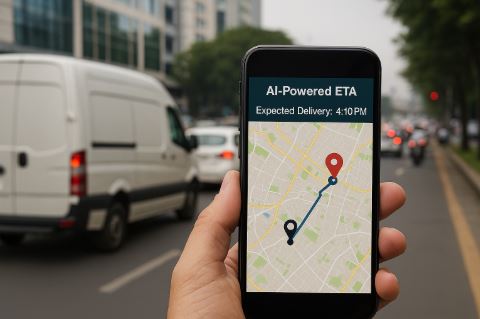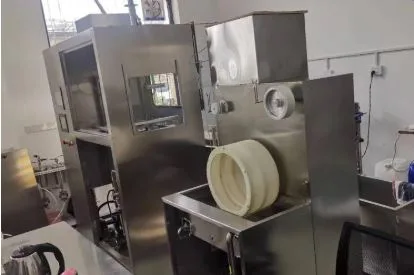Smarter Than Maps: How AI Helps Delhivery Predict Package Arrivals When Others Can’t
Where Real-Time Delivery Tracking Meets Predictive Intelligence
In a country as vast and dynamic as India, delivery logistics face challenges that even the most sophisticated digital maps struggle to overcome. Between rural addresses with no official postal codes, sudden weather disruptions, hyperlocal traffic jams, and underdeveloped infrastructure, getting a package from warehouse to doorstep is anything but predictable.
To stay ahead of these obstacles, customers turn to services that blend real-time tracking with advanced forecasting. That’s where delhivery tracking plays a critical role. The platform gives users a streamlined interface to check the status of their Delhivery shipments, offering not just standard location pings, but also estimated delivery timelines, progress breakdowns, and delivery flow insights. Unlike many courier websites that limit you to vague “In Transit” labels, this tool breaks down where your parcel really is — and where it’s likely headed next.
The Problem with Standard ETA Calculations
Traditional ETA (Estimated Time of Arrival) systems typically rely on GPS data, road networks, and publicly available map APIs like Google Maps. While these work reasonably well for passenger navigation, they fall short in the world of last-mile logistics.
Why? Because package delivery routes often don’t follow commuter logic. Couriers may use local shortcuts, switch vehicles mid-route, or deal with building-specific entry delays. Google Maps doesn’t know which apartment block is under renovation or that a driver will make 47 other stops before reaching yours. It also can’t predict warehouse delays, customer reschedules, or manual sorting errors at the facility.
In high-density zones like Mumbai or Bangalore, a 5-km delivery can take 10 minutes or 2 hours — and standard tools have no way of knowing which. This is where Delhivery’s AI comes in.
How Delhivery’s AI-Powered ETA Actually Works
Delhivery has invested heavily in predictive logistics technologies. Their ETA algorithm doesn’t just rely on GPS signals; it incorporates a multi-layered dataset, including:
- Real-time traffic conditions blended with historical congestion data
- Courier behavior patterns (e.g., average delivery speed by time of day and city sector)
- Weather forecasts and their correlation with local delivery slowdowns
- Parcel density per route and load volume
- Frequency of successful deliveries to similar PIN codes and addresses
The system uses machine learning to continuously refine its predictions. For instance, if it detects that deliveries to a specific housing complex typically fail in the late evening due to entry restrictions, it adjusts ETA windows accordingly for similar packages.
This predictive power is not static — it adapts with every new data point, making it far more accurate over time. Users checking their status via Delhivery tracking can often see not just where their package is, but an ETA that reflects real conditions, not just ideal scenarios.
Why This Matters for Urban and Rural India Alike
In urban India, consumers are impatient and time-sensitive. Food delivery apps have trained users to expect exact time windows, and e-commerce must keep up. Knowing that your package will arrive not “sometime today” but “between 3:30 and 4:10 p.m.” builds trust — and reduces failed deliveries due to no one being home.
In rural regions, meanwhile, the stakes are different. Connectivity is lower, but demand is rising. Many addresses aren’t well-mapped, and local knowledge often trumps digital tools. Delhivery’s model learns from these regions too — using local delivery agents’ behavior to correct location assumptions and fine-tune rural ETAs based on actual delivery conditions.
By aggregating this intelligence, Delhivery not only speeds up its service but helps avoid one of the biggest cost drivers in logistics: redeliveries. Each failed attempt means wasted fuel, labor, and delays in the entire delivery ecosystem.
AI Predictions vs. Real-World Logistics: A Comparison
Let’s consider a scenario: A package is dispatched from a hub in Pune to a customer in suburban Nagpur. Google Maps might suggest a 7-hour drive. However, Delhivery’s AI predicts a 2-day delivery window. Why? Because it knows the driver will hand off to a second-tier partner, who in turn will wait for a consolidated load before proceeding. The algorithm factors in route congestion near the Nagpur facility, expected delays in sorting, and even typical rain-related slowdowns during monsoon season.
The result? The customer receives an ETA that’s not just “fast,” but accurate — avoiding false expectations and needless frustration.
Better Customer Experience, Smarter Business Decisions
This kind of delivery transparency doesn’t just benefit customers. Sellers, e-commerce platforms, and warehouse managers use these forecasts to:
- Optimize when and how to pack outgoing orders
- Coordinate customer service follow-ups
- Minimize refund claims tied to “lost” or “delayed” items
- Improve delivery rate KPIs (Key Performance Indicators)
With access to AI-powered ETAs through tracking tools, sellers can even integrate estimated delivery times into product listings — increasing conversion rates among time-sensitive buyers.
AI Is Changing How We Think About “In Transit”
Logistics used to be binary: either your package was moving, or it wasn’t. But AI is filling in the gaps, offering detailed, data-backed insights that map not just locations — but probabilities. This shift from reactive to predictive logistics is turning delivery from a black box into a transparent service that empowers everyone from first-time shoppers to national retailers.
For customers who rely on precise delivery timing — whether it’s for a gift, a medicine refill, or an urgent office document — AI is not a luxury. It’s a necessity.
As India’s cities grow more complex and its logistics networks more layered, the need for predictive intelligence will only deepen. Tools like Delhivery tracking are not just helpful add-ons — they’re the front-end of a smarter, AI-powered shipping experience.
Because in a world where Google Maps can’t always guide your box to the door, it’s AI that finishes the job.





